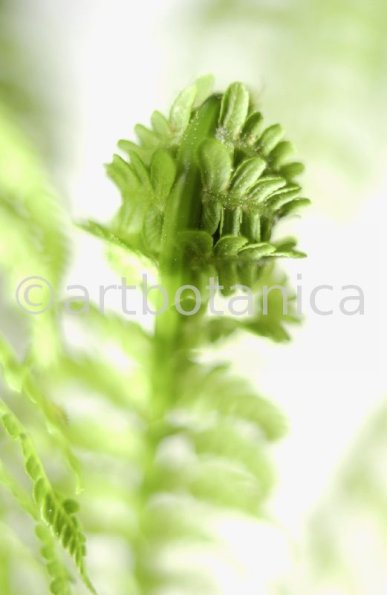
Farn ist eine der ältesten Pflanzen der Erde. Die Wedel des sommergrünen Farns sind in Rosetten angeordnet. Sie erreichen eine Länge von etwa einem Meter, können jedoch auch bis 1,5 m lang werden. Früher wurde der Farn als heilige Pflanze für allerlei magische Zwecke eingesetzt.
In der Medizin ist sein bekanntestes Einsatzgebiet die Vertreibung von Würmern It is one of the most common ferns of the temperate Northern Hemisphere. It favours damp shaded areas and is common in the understory of woodlands, but is also found in shady places on hedge-banks, rocks, and screes. The half-evergreen leaves have an upright habit and reach a maximum length of 1.5 m, with a single crown on each rootstock. The bipinnate leaves consist of 20-35 pinnae on each side of the rachis. The leaves taper at both ends, with the basal pinnae about half the length of the middle pinnae. The pinules are rather blunt and equally lobed all around. The stalks are covered with orange-brown scales. When the spores ripen in August to November, the indusium starts to shrivel, leading to the release of the spores. The root was used, until recent times, as an anthelmintic to expel tapeworms. It is sometimes referred to in ancient literature as Worm Fern.
